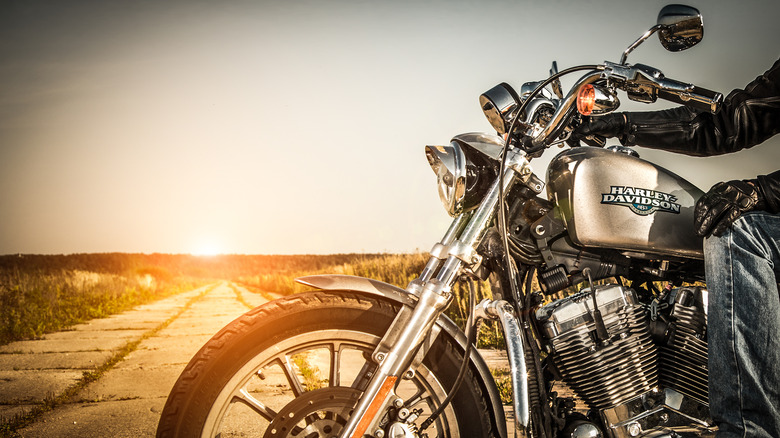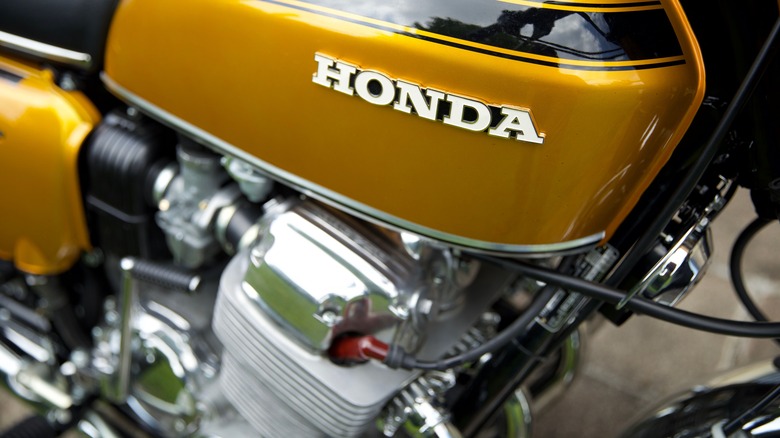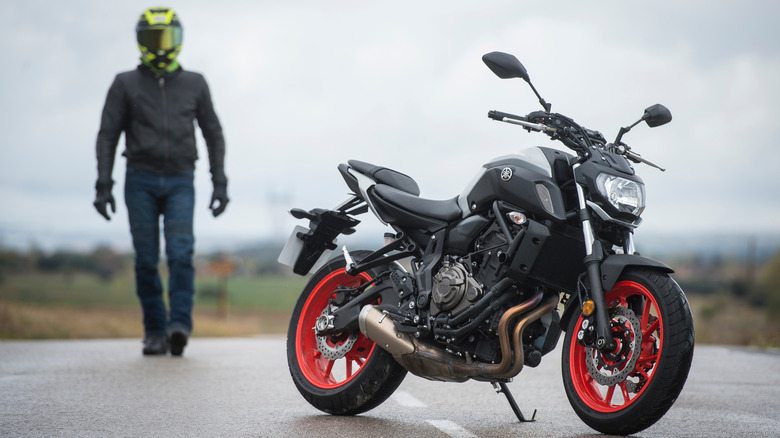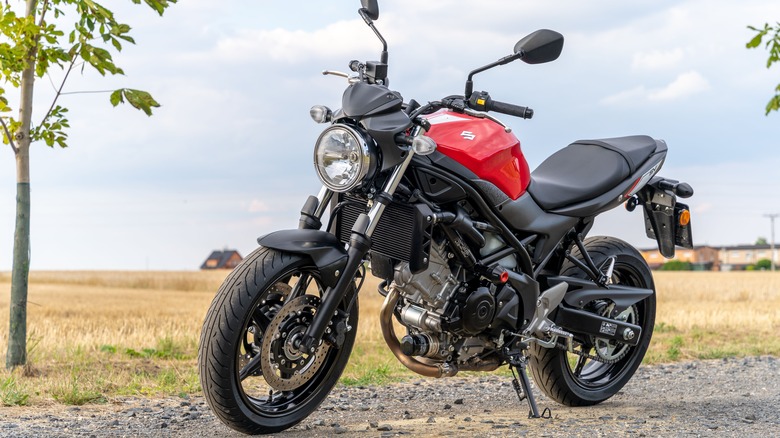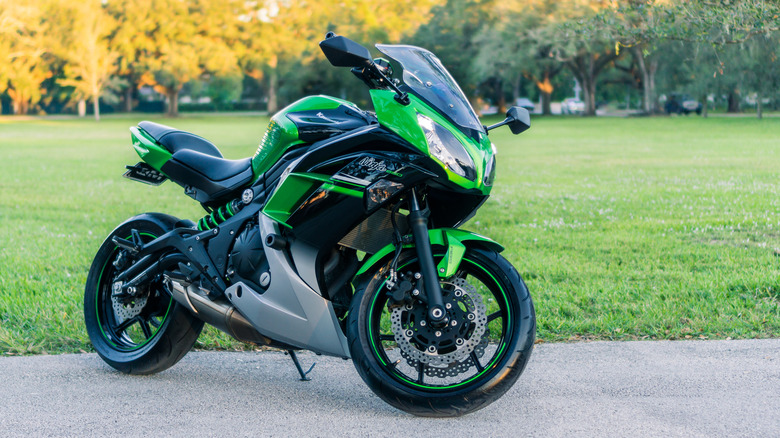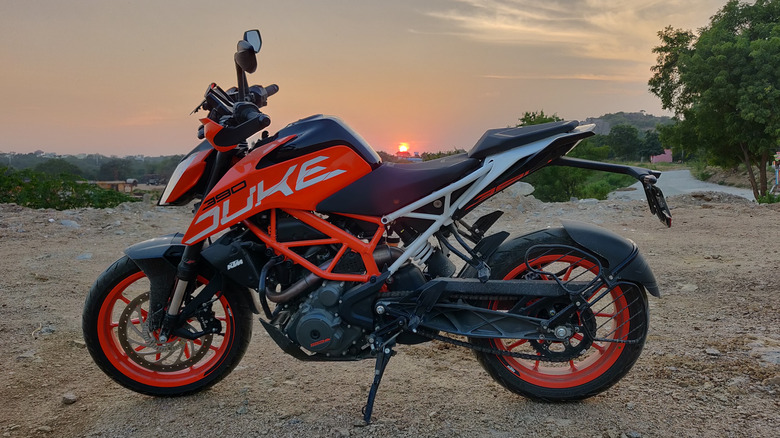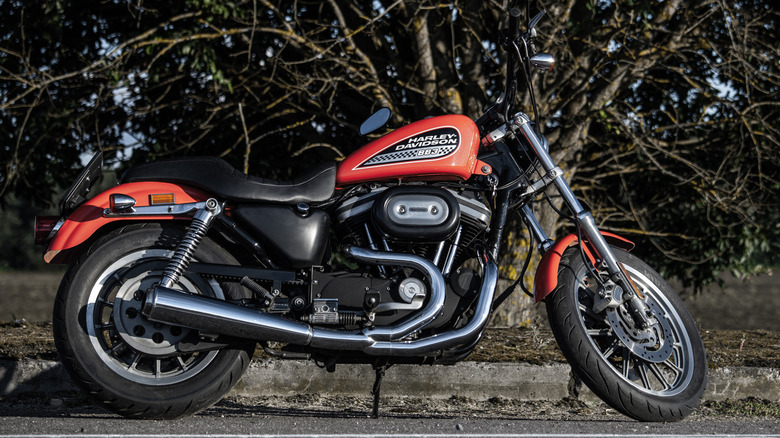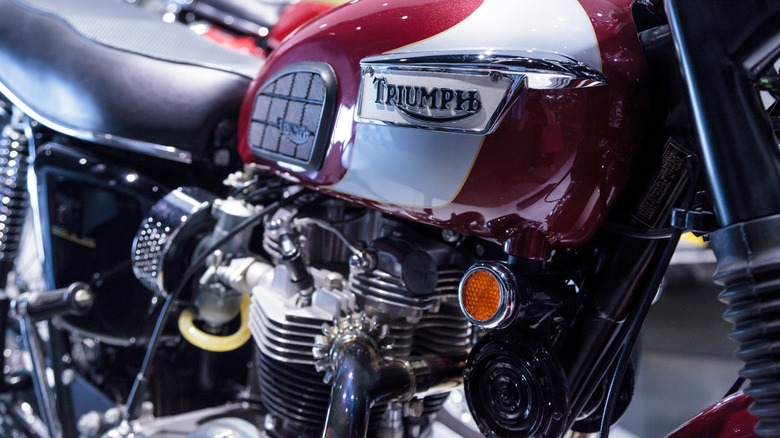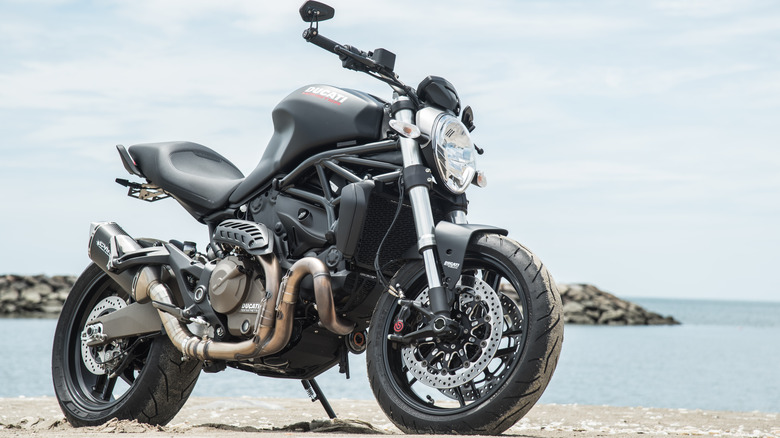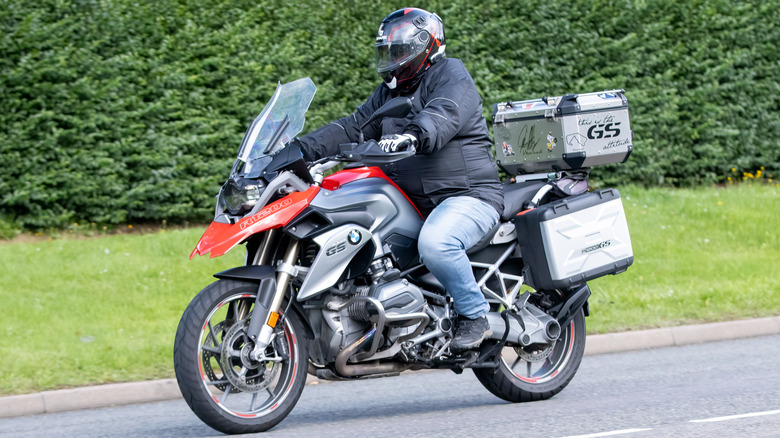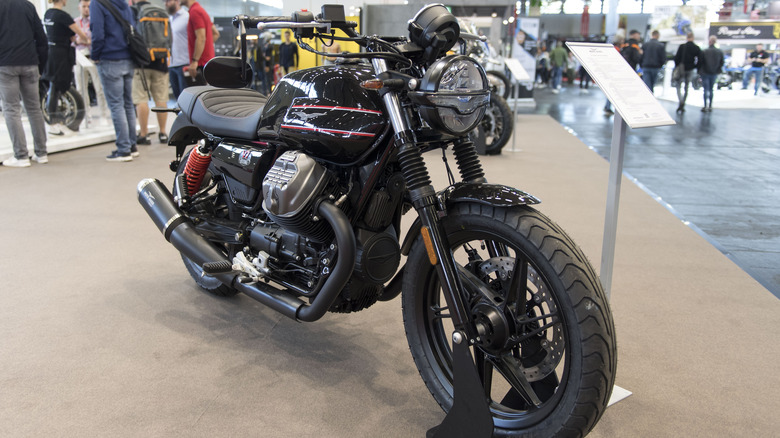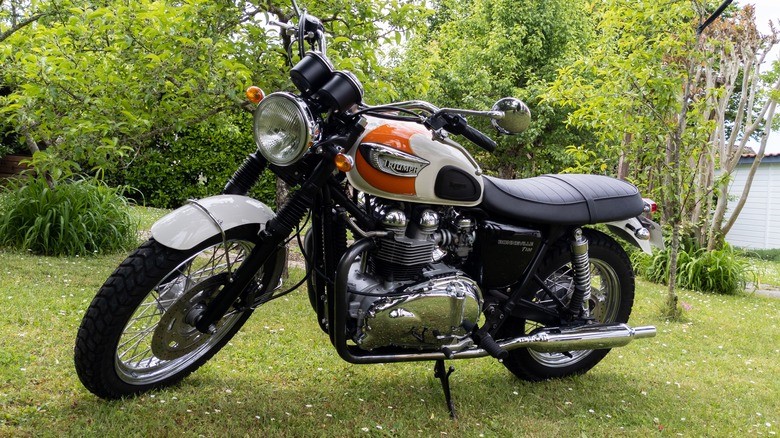10 Super Reliable Motorcycle Engines That Reviewers Swear By
With regular care, your motorcycle can last for decades, but as the bike's beating heart, its engine will require the most attention to ensure a long and healthy life. Yet, some engines are simply superior to others by design, with better build quality and functionality, and these are likely to be more reliable and experience better longevity with careful use and proper maintenance.
While the reliability of Japanese motorcycle engines from brands like Suzuki, Yamaha, Kawasaki, and Honda is well documented, some American and European marques are catching up in the dependability stakes. However, no two engines are alike, and there is significant variance in reliability between brands, models within those brands, and from one model year to the next.
Motorcycle reliability was the subject of a survey conducted by SlashGear in 2023. Still, brand satisfaction can hold significant sway over how people answer in polls, and most motorcyclists have a sentimental weakness for their own vehicles. Here, we adopted a different approach, and extensively researched and curated the wealth of available reviews on motorcycle engines to determine which motors stand out as the most dependable.
You'll find more about our research methods at the end of this article, but in the meantime, here are our picks for the most trustworthy engines, according to reviewers.
Honda CB750
1969 was a year that heralded a sea change in the motorcycling world, as Soichiro Honda introduced the CB750 to the biking public. The "world's first superbike" was as sophisticated as it was powerful, although it was ultimately for its engine that it became renowned. The famous powerplant became a watchword for reliability among owners and is still often discussed today, as original bikes in good condition are in high demand.
So, what was so special about the CB750's engine? The Japanese company had heard that Triumph had set its sights on a 750cc performance bike and wanted to better Harley-Davidson's 66-horsepower Shovelhead. Hence, the 67-horsepower CB750 was created. It featured an inline four-cylinder engine with two exhausts per side built to be reliable, first and foremost.
Each engine was tested by running it at 6,000 revolutions per minute for 200 hours before it was deemed fit for purpose. After this, Honda would redline the engine for a further 20 hours at 8,500 rpm just to be sure that the engine would meet the company's high standards. It was then tuned to perfection to eliminate vibration, and every motorcycle that rolled off the production line was subject to the same stringent checks. This attention to detail paid off, and the Honda CB750 has since gone down in history as one of the best examples of aesthetics, performance, and reliability combined.
Yamaha MT-07 engine
Honda may have a reputation for rugged dependability, but Yamaha came out on top on Consumer Reports' 2015 survey of the most reliable motorcycle brands after four years of ownership. With a failure rate of just 11% after 48 months, this well-established marque is famous within the powersports segment, and its MT-07 (known as FZ-07 in North America until 2017) mid-capacity naked bike is a significant contributor to the brand's continued positive reliability ratings.
The Yamaha MT-07 features a 689cc parallel-twin, eight-valve, fuel-injected engine known for its smooth power delivery and reliability. Such is the bike's versatility that it has been thoroughly tested in all kinds of conditions over the course of its long production run. Even after the 2021 model was tweaked to comply with Euro5 emissions standards, the engine maintained its integrity, and the bike was just as fun to ride. It is characterized by smooth torque development and strong acceleration in the lower rev ranges, thanks to what Yamaha calls its "cross-plane concept," with a 270-degree crankshaft that gives the engine its distinctive throttle response.
Many reviewers have suggested the Yamaha MT-07 will run for well over 75,000 miles when properly maintained, and Motorcycle News has repeatedly lauded each generation's impressive engine reliability. Yamaha's standard road warrior ticks many boxes as a one-size-fits-all, reliable bike well suited to relative newcomers, experienced riders, commuters, and weekend tourers alike.
Suzuki SV650 engine
As a direct competitor of the MT-07, the Suzuki SV650 offers comparable engine reliability. This makes sense, as while the engines are markedly different, with the Suzuki comprising a 645cc V-twin versus Yamaha's 689cc parallel-twin configuration, they are both mid-capacity, Japanese naked bikes that are relatively under-stressed compared to their liter-class big bike counterparts.
The SV650's V-twin powerplant has a reputation for being durable and easy to maintain. When coupled with the bike's lightweight frame, this affordable street bike's engine is very economical and has been highly regarded since its 2016 debut. Its cylinders are arranged in a 90-degree configuration, meaning you have engine braking in spades, and it's happiest at between 6,000 and 9,000 rpm, producing a maximum of 75 brake horsepower.
Part of the reason for the SV650's longevity is its V-twin's perfect primary balance, which places less stress on the engine. This is evident in the bike's performance, with some owners testing its reliability at well over 130,000 miles. Conservative estimates place a well-looked-after model at being good for over 85,000 miles, provided the owner's manual is adhered to with timely valve inspections and maintenance.
Kawasaki Ninja 650 engine
Kawasaki's Ninja line of sports-oriented machines has covered a full spectrum of engine sizes, from the entry-level Ninja 250R to the formidable Ninja H2R. While the mid-sized Ninja 650 is undoubtedly sporty, its high bars and upright riding position set it aside from other sportbikes in the Ninja range with its more sensible profile. This commuter-friendly bike is in a similar category to the Yamaha MT-07, which also shares a parallel-twin engine.
The Ninja's 649cc engine is known for its reliability and versatility, and it has been in production in some iteration since 2006. It is a retuned version of the same engine used in Kawasaki's Versys 650 and ER6-F models, and all are examples of affordable, economical workhorses with their respective segments. The engine has been described as "bullet-proof" by Motorcycle News, who elsewhere remarked that it was famous for its ability to run and run.
Like the Suzuki and the Yamaha here, the Ninja 650 can be ridden close to the redline for many years before it starts showing signs of aging and, with proper maintenance, can last well over 100,000 miles. At this point, it's worth mentioning that a bike is only healthy as long as its owner is willing to take care of it, and any motorcycle declaring this kind of mileage has been properly looked after.
KTM 390 Duke engine
Austrian brand KTM makes many advanced motorcycles that command premium prices. However, the budget 390 Duke features a single-cylinder engine often praised for its exceptional reliability and efficiency. This small-capacity motorcycle is made in Asia and sells well in Asian markets, where people expect to put a lot of miles on their motorcycles, as they are often used as their daily commuter or primary mode of transport.
The 390 Duke's engine is a single-cylinder thumper with twin overhead camshafts. This has the benefit of simplicity on its side, but also has to work hard to maintain highway speeds and tends to vibrate more than its multi-cylinder counterparts. Despite its shortcomings, the engine has a satisfying growl at higher revs while remaining sedate in traffic. While it was subject to an overhaul to comply with Euro5 emissions regulations, the engine seems to have emerged just as strong as before, and engine complaints on forums appear to be rare. The bike experienced a significant engine overhaul for the 2017 model year, improving its overall performance.
After Cycle World stringently tested the 390 Duke over 20 months and 9,000 miles, the bike's only engine complaint resulted from a blown 10-amp fuse; otherwise, it had no issues whatsoever. In the long term, few owners and reviewers have reported problems arising before reaching 25,000 miles on a Duke 390.
Harley-Davidson Evolution engine
The early 1980s were a turbulent time for Harley-Davidson. Competition from Japan was strong, especially as far as reliability was concerned. At the same time, the company had just experienced a buyout and reorganization, and was facing bankruptcy due to a decline in sales. Harley needed to regroup to claw back significant market share; 1984's aptly named Evolution engine was to herald a new era of reliable motors for the legendary American brand.
The Harley-Davidson Evolution engine, found in the Sportster, Softail Custom, and Fat Boy, to name a few, was designed as a reliable alternative to its Panhead and Shovelhead powerplants. It has enjoyed a strong following for its robust design and was credited with rescuing the company from ruin, as it inspired brand confidence and saved H-D a fortune in money spent on settling warranty claims.
The single-cam Evolution engine was compact but produced impressive amounts of power and torque compared to Harley's twin-cam designs, and proved to be a game-changer for the brand's reliability ratings. In particular, the engines produced after 1991 were seen as the best examples, as this is when the Evolution engine found its stride. The engine's performance had been significantly improved with the use of electronic fuel injection, as compared to its carburetted older models, and hydraulic valve lifters positively impacted their reliability going forward.
Triumph Bonneville engine
Few modern retro motorcycles are as recognizable as the Triumph Bonneville, which has been around in various iterations since the mid-20th century and is still going strong. It is widely regarded as the ultimate air-cooled British parallel twin, with plenty of character and charm and solid reliability ratings from owners and reviewers alike.
The Triumph Bonneville engines produced after 2001 are often commended for their reliability. These 865cc units feature a 360-degree crankshaft configuration with twin balancer shafts, which means both pistons fire simultaneously, allowing for smoother operation and less engine vibration. This, in turn, translates to less stress on the engine and better overall reliability.
Having said that, all is not plain sailing with the Bonneville, as water damage can quickly destroy its wiring harness, and corrosion and brake issues are commonplace and costly to repair. But as far as the engine itself is concerned, it is one of Triumph's best assets, carried over to the water-cooled, 900cc T100 Bonneville from 2017.
UK-based insurance company reviewer Bike Social praises the post-2001 Bonneville as a reliable and worthy purchase, nearly a quarter of a century on. Worldwide owners often state that their older (albeit well looked after) models can last well over 100,000 miles.
Ducati Monster 821 engine
The Italians are lauded for making beautifully engineered, stunning motor vehicles that are essentially automotive works of art. This is certainly true of Ducati, Italy's premium bike brand that can be likened to its red-liveried compatriot, Ferrari, but on two wheels.
The Ducati Monster 821 was released to high acclaim in 2014 as its flagship naked middleweight bike. It featured a water-cooled, 821cc engine displayed front and center beneath a shock of red ribcage. Ducatis are not generally considered to be among the most reliable motorcycles. However, the Monster 821, with its eight-valve V-twin engine, offered an impressive blend of performance and reliability until it was replaced with an updated version in 2021.
The Monster's engine is a stressed member, forming part of the chassis and adding strength to the bike's frame. It was borrowed from Ducati's Hypermotard model and dubbed the "Testastretta 11-degree," meaning "narrow-head," as its cylinder heads underwent a complete redesign in collaboration with Cosworth Engineering. Notably, the valve-clearance check is recommended every 18,000 miles on the 821's engine, reassuring owners that this powerplant is built to last. Additionally, it is recommended that the cam belt be replaced every five years, and essential services are recommended at 9,000-mile intervals (aside from the standard oil changes and filter replacement).
BMW R1200GS engine
BMW Motorrad needs no introduction as one of the premium motorcycle marques, famous for its impressive features and build quality. The BMW GS series is by now legendary among adventure motorcyclists. As adventure biking gathered popularity in the new millennium, the 2004 BMW R1200GS succeeded the R1150GS as the flagship BMW machine within this segment, and it was highly sought after despite its hefty price tag.
Typically for BMW, the R1200GS featured a 1,175cc boxer-twin engine configuration that is now synonymous with the brand, and this underwent an extensive upgrade in 2013, including a notable increase in power from 100 to 125 brake horsepower. This engine model went unchanged throughout subsequent model years, which was a testament to its impressive performance and reliability.
Engine reliability is paramount on a machine expected to venture far off the beaten track and be subjected to extreme riding conditions. Fortunately, the R1200GS does not disappoint, and lifespans of well over 100,000 miles are not unheard of before significant rebuilds are required. This is reflected in the high prices that used vehicles sell for, which is often a good yardstick for a motorcycle's longevity. The R1200GS engine didn't undergo another significant upgrade until 2023's higher-capacity R1300GS, which proved to be lighter and more powerful still.
Moto Guzzi V7 Mk III engine
Few motorcycle brands embody the phrase "if it ain't broke, don't fix it" better than Moto Guzzi. This venerable Italian marque has been churning out modern retro machines to rival the likes of Triumph and Norton since the inter-war years of the 20th century. One of its most popular models is its answer to the Triumph Bonneville, the Moto Guzzi V7, and its Mark III engine, which has since proved to be a highly dependable piece of engineering.
The Moto Guzzi V7 Mk III is equipped with a transverse V-twin engine that is 10% more powerful than its predecessor, the Mk II, and is recognized for its unique design and reliability. Similar to the Bonneville, this is a low-stress engine that will last for decades when properly maintained. In this instance, it is mounted in a sideways or transverse configuration, with each cylinder head jutting out in front of the rider's knees. Not only is this engine aesthetically pleasing, but it is a tried-and-true workhorse that effortlessly combines old and new technology.
Bike Social and Motorcycle News praise the Moto Guzzi V7's engine for reliability, and long-term tests have shown it to be an able mile-muncher, with some owners claiming to have passed the 100,000-mile mark with few issues. Those looking for a sophisticated and relaxed European alternative to the classic British twin would likely get just as much pleasure and longevity from this modern retro with bags of charm and heritage.
How we made our selection
To select engines for this article, we used metrics from the Consumer Reports survey conducted in 2015 of the most reliable motorcycles by brand and reports in the intervening years relating to engine longevity and reliability. We then researched the best engines from each of these major brands, according to various industry reviewers, including Motorcycle News, Visor Down, Devitt Insurance, Bike Social, Hemmings, and Cycle World, to arrive at our top picks.
